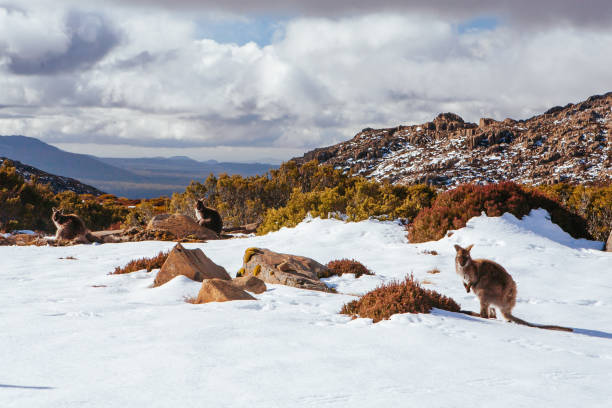Experience the Beauty of Snow In Australia with Thrilling Activities and Picturesque Scenery
Wiki Article
Discover the Interesting Effects of Snow in Australia on Regional Communities
Despite its reputation for sun-soaked landscapes, Australia additionally flaunts regions buried by snow-- a sensation that greatly affects the country's special ecosystems. The shielding properties of snowflakes shield plants and fauna among the coldest winters, while the melting snow supports rivers and aquatic life. Nonetheless, the real wonder depend on how these chilly conditions form the nation's biodiversity and nutrient cycles. As we unwind this intricate connection, we find ourselves walking on undiscovered premises in Australia's high country.The Unexpected Regions of Snowfall in Australia
Although Australia is typically associated with sandy coastlines and sun-scorched landscapes, certain regions remarkably experience snowfall. The high country regions of New South Wales, Victoria, and Tasmania are specifically known for their winter snow. The Snowy Mountains in NSW, as an example, get bountiful seasonal snow, using a raw contrast to the country's typical hot, arid climate. The Victorian Alps and parts of Tasmania likewise see yearly snowfalls, changing the landscape right into a winter months heaven. These locations are not simply abnormalities however essential parts of Australia's diverse environment system. The presence of snow in these areas dramatically affects regional environments, consequently affecting the nation's distinct biodiversity. However, the specific impact on Australia's unique vegetation will certainly be gone over in the following section.
Just How Snow Impacts Australia's Distinct Vegetation
While it might seem uncommon, snowfall in Australia plays a vital duty in forming the nation's distinct flora. The snow-filled wintertimes foster resilience in Australian plant varieties. This is specifically obvious in the sub-alpine and towering regions, where snow gum tissues and hill plum-pines flourish. These plants have progressed to survive in severe conditions, with snow working as a safety blanket from rough winds and freezing temperatures. The snow additionally adds to the moisture content of the soil, supplying necessary hydration for plant throughout the completely dry summertime. Fundamentally, the snow influences the timing of blooming and seed dispersal, the growth prices, and the survival of several plant species, showcasing the detailed interplay in between climate and vegetation in Australia.
The Adjustments of Australian Animal to Snowfall
Simply as Australia's flora has adapted to the wintery conditions, the neighborhood animals also, display amazing adaptations to the snowfall. Variety like the Hill Pygmy-possum, the only Australian marsupial recognized to hibernate, have evolved strategies to survive in snowy environments. It makes use of the snow as insulation, hibernating in rock gaps underneath the snow to stay cozy. Likewise, the Snow Skink, a varieties of lizard, changes its colour to white during winter season, giving camouflage versus predators. Birds such as the Snowy Hills' Crimson Rosella likewise change their diets to eat readily available food resources during cooler periods. Therefore, regardless of the harsh problems, Australian animals shows a durable and adaptive nature, guaranteeing their survival in areas experiencing snowfall.The Role of Snow fit Neighborhood Ecological Communities
In shaping the neighborhood ecological communities, the role of snow in Australia is both multilayered and profound. Snow gives a vital water his comment is here resource, feeding rivers and you can try these out reservoirs as it melts, thus supporting a range of water life kinds. The visibility of snow shapes the vegetation patterns, pet habits, and total sustainability of Australia's distinct ecological communities.
The Future of Snowfall in Australia: Predictions and Implications

Offered the vital duty snow plays in forming regional environments, the future of snowfall in Australia is attracting enhancing focus from scientists and conservationists. Current environment designs predict a considerable decline in snowfall as a result of worldwide warming, with possibly profound effect on local ecological communities. Less snow could result in decreased water schedule in towering regions, detrimentally affecting wildlife environments and plant. Furthermore, it can modify the timing of seasonal changes, interfering with the life cycles of numerous indigenous types. The tourist market, heavily reliant on the winter snow period, might likewise encounter substantial obstacles. Consequently, comprehending these predictions and their ramifications is essential to establish efficient conservation methods, making certain the preservation of Australia's unique biodiversity and the sustainability of its economic climate.
Verdict
The function of snow in Australia's ecosystems is pivotal yet usually overlooked. Hence, the snow in Australia is more than an all-natural spectacle; it's a vital gamer in the country's ecological story.Despite its reputation for sun-soaked landscapes, Australia additionally flaunts regions buried by snow-- a phenomenon that profoundly affects the nation's unique ecosystems. It uses the snow as insulation, hibernating in rock gaps beneath the snow to stay click here now warm - Snow In Australia.In shaping the local ecosystems, the function of snow in Australia is both profound and multilayered. The presence of snow shapes the plants patterns, pet behavior, and general sustainability of Australia's special ecological communities
Provided the crucial function snow plays in shaping neighborhood environments, the future of snowfall in Australia is drawing enhancing focus from conservationists and scientists.
Report this wiki page